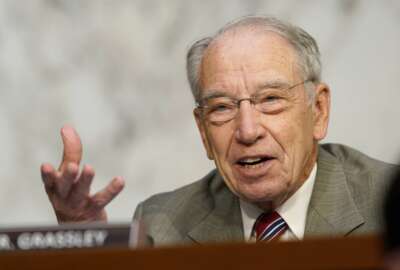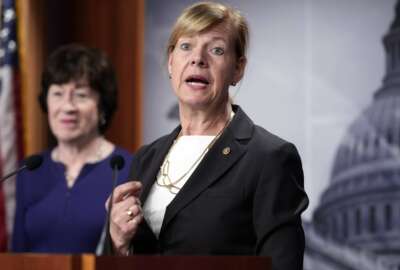The Federal Headlines is a daily compilation of the stories you hear discussed on Federal Drive with Tom Temin.
- Federal employees will know in three weeks how big a raise they’ll get come Jan. 1. The Office of Personnel Management says President Obama will approve base pay raises by Aug. 31. He’s already proposed one-point-six percent. But OPM also asks managers to submit requests for raises in special, hard-to-fill job classes. (Chief Human Capital Officers Council)
- OPM is reminding agencies they have a few deadlines coming up for the Federal Cybersecurity Workforce Assessment Act. Their first deadline is coming up in December. They’re supposed to look at how many cyber professionals have certifications and how many of their employees would be ready to cyber certification exams. OPM says it’s working with agency councils and the National Initiative for Cybersecurity Education to meet the requirements of the Federal Cybersecurity Workforce Assessment Act. (Chief Human Capital Officers Council)
- The Office of Management and Budget is clamping down on mobile devices and services. Agencies must consolidate and improve their management of smartphones and other mobile devices as part of a third memo implementing category management. The Office of Federal Procurement Policy is requiring agencies to report on a quarterly basis their usage of mobile devices and services. Civilian and Defense agencies also must only use governmentwide contracts to purchase these devices and services no later than September 2018. Through the memo, OFPP hopes to better control and reduce duplication of more than 1 billion dollars of spending across this category. (Federal News Radio)
- Some service disabled veterans who work at federal agencies can soon take advantage of a new kind of leave program. The Office of Personnel Management is issuing a final rule that describes how agencies should implement disabled veteran leave. The program lets first-year disabled veterans hired after November 5 of this year tap into 104 hours of leave time. Eligible employees must use the time to deal with a medical treatment related to the service-connected disability. (Federal Register)
- The Senate’s Veterans First Act has hit some roadblocks. Senate VA Committee Chairman Johnny Isakson sponsored the omnibus. He says he hasn’t been able to bring the bill to a full vote on the Senate floor. VA Secretary Bob McDonald says he supports the Senate omnibus and encourages veterans to contact to their congressman in support of the bill. Isakson is hoping that between him and House Veterans Affairs Committee Chairman Jeff Miller they’ll be able to pass major veterans legislation this year. (Federal News Radio)
- Officials with the Navy say the branch will phase out its Navy Working Uniform Type 1 as it’s primary shore working uniform starting in October of this year. It will instead be transitioning to the NWU Type 3 uniform. Secretary Ray Mabus says feedback from sailors showed they wanted a lighter and more comfortable uniform than the blue and gray cammies. (Navy)
- The Navy says it’s crossed a major threshold by showing that 3-D printed parts can be used for critical aviation systems. Additive manufacturing has been a highly attractive concept for the Navy for years since it would let maintainers deployed on carriers and other ships make their own parts to replace broken ones, rather than waiting days for spare parts to arrive by air. A test flight this week used 3-D printed titanium fittings to connect a engine nacelle to the wing of an MV-22 Osprey, the first time the Navy has ever used that process for safety critical systems. The same team plans to test 3-D printing on a half dozen other safety critical parts over the next year. (Navy)
- Years of colder winters puts a chill on a greener government. New numbers from the Energy Department show federal agencies failed to hit their goals for facility energy intensity. Heating buildings takes up half of the government’s energy, says a department analyst, and since 2012 the number of days that needed heat have risen 24 percent. (Federal News Radio)
- It’s time to think about the integrity of your agency, and take actions to mitigate risks to integrity. Use a risk management approach. Make sure all individuals know their importance in maintaining integrity. Incorporate values into decision-making. Those are among ten recommendations from Kent State professor Anthony Molina. In an IBM-sponsored study, he looked four large organizations, including the Veterans Health Administration and the Military Health System, looking for keys to maintaining integrity and fidelity to mission. (IBM Center for the Business of Government)
Copyright
© 2024 Federal News Network. All rights reserved. This website is not intended for users located within the European Economic Area.





